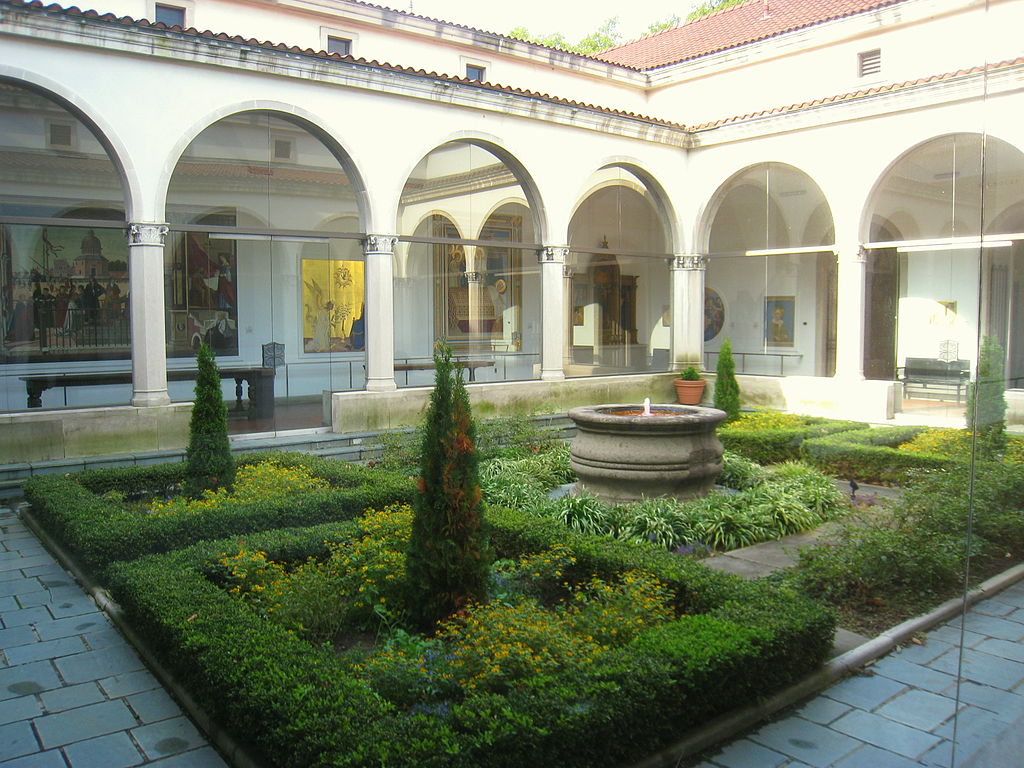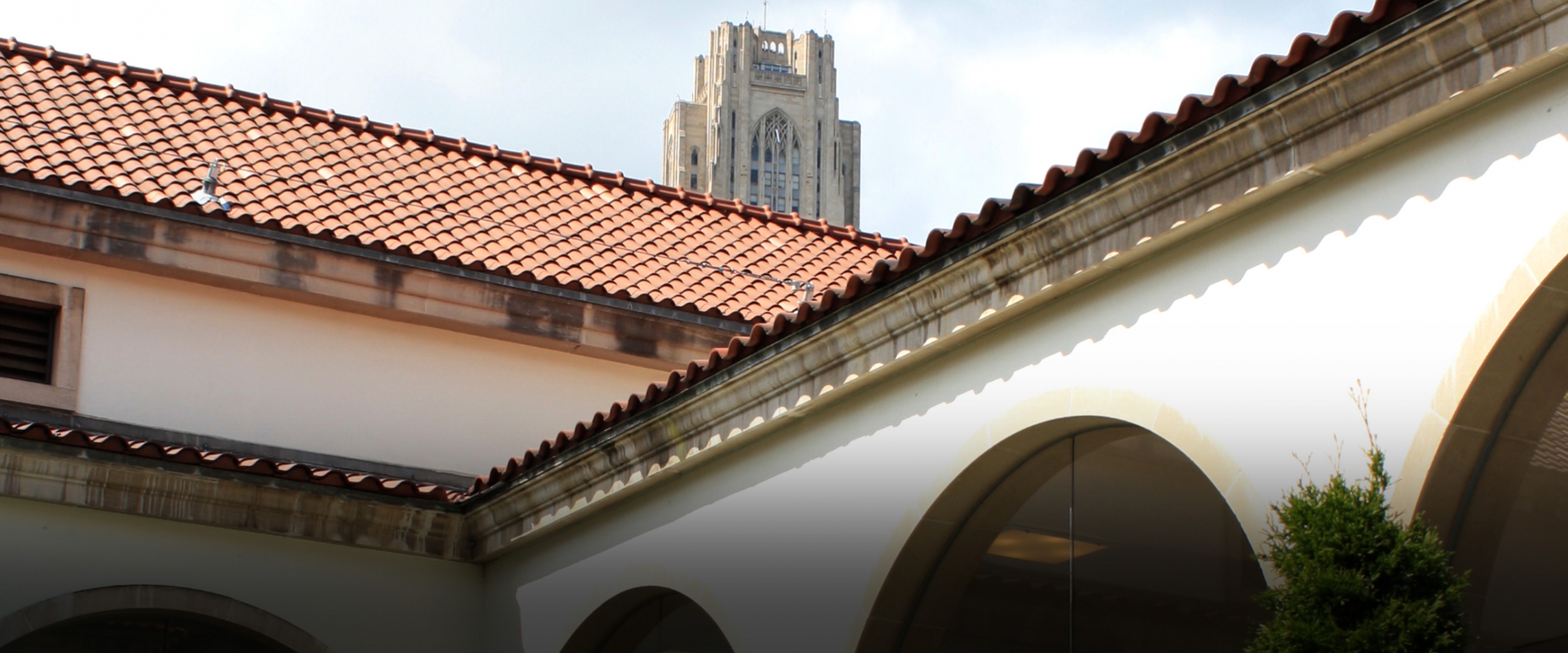Have you ever walked through a city and stumbled upon a building that seems to transport you to another time and place? In Pittsburgh, that feeling often comes when you first see the Frick Fine Arts Building. This remarkable structure, quite honestly, stands out dramatically from its surroundings, making it a truly unforgettable sight for anyone who visits the University of Pittsburgh's campus. It's a place where history, art, and learning come together in a very special way, offering something unique for students and visitors alike.
The Frick Fine Arts Building, officially known as the Henry Clay Frick Fine Arts Building, is not just another campus building. It's a striking piece of architecture, designed to look just like a Florentine palace from the 15th century. Yet, this magnificent structure was actually built much, much later, opening its doors in May of 1965. This blend of old-world charm and mid-20th-century construction makes it a fascinating subject for anyone interested in design or history, so it's a real gem.
This building, you know, holds a significant spot in Pittsburgh's cultural and academic scene. It's home to some key departments at the University of Pittsburgh, and it plays a vital role in the city's artistic life. From its grand design to the valuable resources it houses, the Frick Fine Arts Building tells a story of a family's dedication to art and education, and it's a story worth hearing, in a way.
Table of Contents
- A Vision Brought to Life: The Building's History
- Architectural Grandeur: A Florentine Dream in Pittsburgh
- A Center for Creativity and Knowledge
- The Broader Frick Legacy
- Visiting the Frick Fine Arts Building
- Frequently Asked Questions About the Frick Fine Arts Building
A Vision Brought to Life: The Building's History
The story of the Frick Fine Arts Building truly begins with a remarkable gift. Helen Clay Frick, the daughter of the famous steel tycoon Henry Clay Frick, was the one who financed this entire project. She oversaw its construction very closely, and she named the building in memory of her father. It was, in some respects, a deeply personal tribute, ensuring his name would be associated with art and learning for generations to come, which is pretty special.
Opened in May 1965, the building was a significant addition to the University of Pittsburgh campus. It represented a desire to create a dedicated space for the study and practice of fine arts, something Helen Clay Frick felt strongly about. The architects involved, you know, saw this building as a traditional counterpoint to the more modern structures being built in the valley below. It was meant to stand as a symbol of enduring beauty and classical principles, almost like a steadfast guardian.
This commitment to a timeless aesthetic is quite apparent. The decision to model the building after a 15th-century Florentine palace wasn't just a whim; it reflected a deep appreciation for historical architecture and artistic heritage. So, while it's a relatively young building in terms of its actual construction date, its design roots go back centuries, giving it a unique character, in a way.
Architectural Grandeur: A Florentine Dream in Pittsburgh
Stepping up to the Frick Fine Arts Building, you can't help but notice its incredible design. It truly looks like something you might see in Italy, not in Pittsburgh. The detailed stonework, the grand arches, and the overall symmetry all echo the elegance of Renaissance-era palaces. It's quite a sight, honestly, and it makes you pause and take it all in.
The building's presence is quite commanding, sitting on the southern edge of Schenley Plaza, directly opposite the Carnegie Institute. Its design was a deliberate choice to evoke a sense of tradition and classical beauty. This architectural style, you know, provides a wonderful contrast to some of the more contemporary buildings around it, making it stand out even more as a distinct landmark.
The care put into its appearance extends beyond the main structure itself. Every detail seems considered, from the way light hits its surfaces to the materials chosen for its construction. It’s a building that, in a way, invites closer inspection, revealing more of its charm the longer you look. This attention to historical accuracy in its design, even for a modern build, is really something to appreciate, you know.
The Mary Schenley Memorial Fountain
Just near the entrance of the Frick Fine Arts Building, you'll find another beautiful piece of artistry: the Mary Schenley Memorial Fountain. This lovely fountain was designed by Victor Brenner, who is perhaps most famous for designing the U.S. Lincoln Cent. His work on the fountain adds another layer of artistic importance to the area around the building. It's a nice touch, really, adding to the overall aesthetic appeal of the surroundings.
The fountain serves as a welcoming feature, complementing the grand architecture of the building. It provides a peaceful spot for reflection or just a quick moment of calm amidst the busy campus life. The presence of such a thoughtfully designed piece of public art just outside the building emphasizes its role as a center for all things creative and beautiful, which is pretty neat.
Its placement, you know, creates a harmonious visual flow between the building and the plaza, making the entire area feel like a cohesive artistic statement. The fountain, in some respects, prepares you for the artistic treasures and academic pursuits found within the Frick Fine Arts Building itself. It's a small but very significant part of the overall experience.
A Center for Creativity and Knowledge
Beyond its stunning exterior, the Frick Fine Arts Building serves as a vibrant hub for academic and artistic pursuits at the University of Pittsburgh. It's a place where hundreds of students, you know, filter in and out every week, pursuing their passions and gaining new knowledge. It truly is a dynamic environment, buzzing with intellectual energy and creative spirit.
This building is, quite literally, the heart of fine arts education on campus. It provides the space and resources for students to explore various artistic disciplines, from the history of art to hands-on studio work. The atmosphere inside is one of discovery and learning, which is pretty much what you'd hope for in such a grand setting.
For many students, this building is where their artistic journeys truly begin or deepen. It's a place where ideas are shared, techniques are refined, and new perspectives are gained. The impact it has on the university's academic life is, arguably, immeasurable, shaping the minds of future artists, historians, and architects.
Academic Excellence and Studio Spaces
The Frick Fine Arts Building is home to two very important departments within the Dietrich School of Arts and Sciences at the University of Pittsburgh. These are the Department of History of Art and Architecture and the Department of Studio Arts. These departments offer a wide range of courses and programs, attracting students from all over. It's a place where serious academic work happens, you know.
For those interested in creating art, the Department of Studio Arts provides nine dedicated creative laboratories. These spaces are designed for students to explore new interests and methods of artistic expression. Whether it's painting, sculpture, or another medium, these labs offer the facilities needed for hands-on learning and experimentation, which is really beneficial.
The availability of such specialized spaces means students have the opportunity to truly hone their skills and develop their artistic voices. This commitment to practical learning, alongside theoretical study, makes the Frick Fine Arts Building a comprehensive center for arts education. It's, as a matter of fact, a place where theory meets practice.
A Library of Distinction
Within the Frick Fine Arts Building, you'll also find the Frick Fine Arts Library, a resource of truly impressive stature. This library is ranked among the top 10 fine arts libraries in the United States, which is a significant achievement. It holds a vast collection of books, journals, and other materials related to art history, architecture, and studio arts, providing invaluable support for research and study.
Students and faculty alike rely on this library for their academic work. Its extensive holdings mean that researchers have access to a wealth of information, from rare texts to contemporary publications. The library is, you know, a quiet sanctuary for deep learning and discovery, a place where ideas can truly flourish.
The high ranking of the Frick Fine Arts Library really speaks to the quality of its collection and the resources it offers. It's a testament to the university's dedication to providing top-tier academic support for its arts programs. So, it's not just a beautiful building; it's also a powerhouse of knowledge, in a way.
The University Art Gallery
Also housed within the Frick Fine Arts Building is the University Art Gallery (UAG). This gallery provides a space for exhibitions, showcasing a variety of artistic works. It's a wonderful opportunity for students and the public to experience art firsthand, right there on campus. The UAG adds another dimension to the building's role as an artistic center, offering visual experiences that complement the academic programs.
The gallery's presence means that the building isn't just about studying art; it's also about experiencing it. Exhibitions can range from student works to pieces by established artists, providing a diverse range of artistic expressions. It's, you know, a place where art comes to life, right there for everyone to see.
The UAG is conveniently located within the building, making it easily accessible for anyone visiting. It truly rounds out the Frick Fine Arts Building's offerings, making it a comprehensive destination for anyone interested in the visual arts. It's, basically, a very important part of the building's overall mission.
The Broader Frick Legacy
While the Frick Fine Arts Building stands as a singular testament to the Frick family's commitment to education and art in Pittsburgh, it's worth noting that the family's influence extends even further into the art world. For example, in New York City, you can visit the Frick Collection, which is housed in Henry Clay Frick's 1914 Fifth Avenue mansion. This collection, recently renovated, is a prominent art museum, a home for art from the Renaissance through the late nineteenth century. It features masterpieces by old masters like Rembrandt, Vermeer, and Bellini, and it's, quite honestly, a treasure.
The Frick Collection in NYC requires advance timed tickets, though members can visit free. It's a place where you can explore artistic masterpieces and delve into famous paintings, which is pretty amazing. Similarly, the Frick Pittsburgh Museums and Gardens offer another opportunity to enjoy art, history, and nature in their galleries, grounds, store, and cafe. These different entities, you know, show the widespread impact of the Frick family's passion for culture and public enrichment.
The Henry Clay Frick Fine Arts Building in Pittsburgh, however, has its own distinct identity and purpose, deeply tied to academic life. It represents a specific branch of the Frick legacy focused on higher education and the nurturing of new artistic talent. So, while there are other "Frick" places, this building in Pittsburgh is uniquely dedicated to the academic side of the arts, which is rather special.
Visiting the Frick Fine Arts Building
If you're in Pittsburgh, a visit to the Frick Fine Arts Building is definitely worth your time. Its address is 650 Schenley Drive, Pittsburgh, PA 15213 (or 15260, depending on the specific campus mapping). It's easily found across from Schenley Plaza and the Carnegie Library of Pittsburgh, making it a central point in a culturally rich area. It's, you know, pretty easy to spot.
For those needing accessibility accommodations, the accessible entrance to the Frick Fine Arts Building is located on the side of the building. This ensures that everyone can experience its beauty and the resources it offers. While many students rush to and from class, not thinking much about its story, taking a moment to appreciate its design and history is something we would definitely suggest.
The building's location also places it near other attractions, allowing for a broader cultural outing. You can learn more about art history and architecture on our site, and you might also be interested in exploring other notable buildings in Pittsburgh. The Frick Fine Arts Building, quite honestly, is a landmark that deserves your attention, offering a glimpse into both the past and the present of artistic endeavors. You can also explore more about Renaissance architecture on academic sites like Britannica.
Frequently Asked Questions About the Frick Fine Arts Building
Is the Frick Fine Arts Building open to the public?
Yes, the Frick Fine Arts Building is generally open to the public during regular university hours. While it's primarily an academic building for the University of Pittsburgh, visitors can typically walk through its common areas and visit the University Art Gallery when exhibitions are on display. It's, you know, a welcoming place.
What is the Frick Fine Arts Building used for?
The Frick Fine Arts Building serves as the main home for the University of Pittsburgh's Department of History of Art and Architecture and the Department of Studio Arts. It houses classrooms, faculty offices, nine creative studio laboratories, the highly-ranked Frick Fine Arts Library, and the University Art Gallery. So, it's basically a central hub for arts education and appreciation.
Who built the Frick Fine Arts Building?
The Frick Fine Arts Building was financed and closely overseen in its construction by Helen Clay Frick, the daughter of steel tycoon Henry Clay Frick. She named the building in memory of her father. It was inaugurated in May 1965, though its design was inspired by 15th-century Florentine palaces, which is pretty interesting.



Author Details:
- Name : Sarah Gibson
- Username : otilia.klein
- Email : lpadberg@ullrich.net
- Birthdate : 1990-11-18
- Address : 103 Vincent Lodge Apt. 920 Petraville, WV 24937
- Phone : 310-865-4397
- Company : Hills and Sons
- Job : Medical Records Technician
- Bio : Et aut vel saepe. Voluptates voluptate tempore sequi eius autem.
Social Networks
Instagram:
- Url : https://instagram.com/jody_id
- Username : jody_id
- Bio : Voluptas explicabo officiis et. Iste provident quis beatae non et. Ex omnis ad cum nesciunt ullam.
- Followers : 4174
- Following : 737
Twitter:
- Url : https://twitter.com/jodythiel
- Username : jodythiel
- Bio : Magni voluptate asperiores deleniti ex. Necessitatibus magni autem sed consequatur vitae eum nesciunt. Corporis accusamus praesentium sed eum nostrum beatae.
- Followers : 4016
- Following : 2581
Tiktok:
- Url : https://tiktok.com/@jody_thiel
- Username : jody_thiel
- Bio : Dolores quas magnam quasi libero porro minima.
- Followers : 4317
- Following : 1087
Facebook:
- Url : https://facebook.com/jody_dev
- Username : jody_dev
- Bio : Officiis minus aliquid quis ratione ex eum culpa. Et sit autem est quia et.
- Followers : 3141
- Following : 580
Linkedin:
- Url : https://linkedin.com/in/thiel1971
- Username : thiel1971
- Bio : Voluptatem fuga deserunt sapiente non.
- Followers : 3957
- Following : 1958
